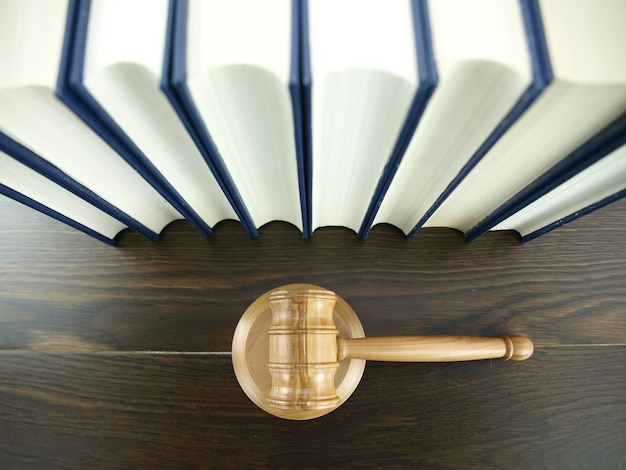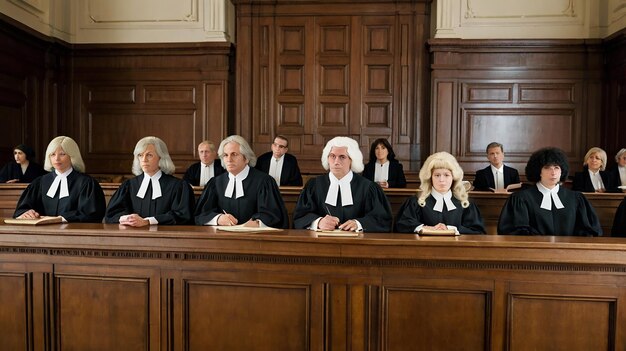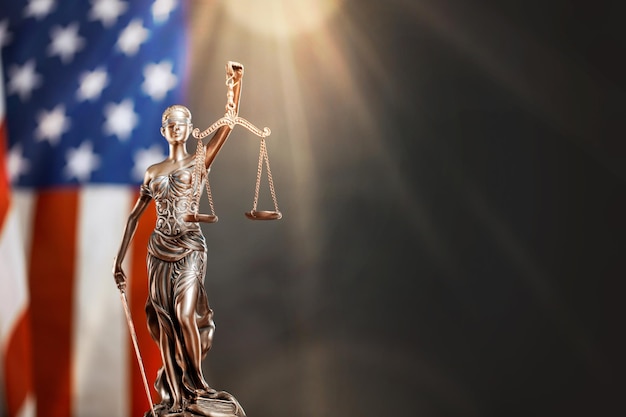Supreme Court Vacancies: Shaping the Future of Legal Precedent in the US

Upcoming Supreme Court vacancies could significantly reshape legal precedent in the US, potentially impacting landmark decisions and the overall direction of American jurisprudence.
The implications of future Supreme Court vacancies are far-reaching, especially when considering the delicate balance of power within the court and the potential for significant shifts in legal interpretation. How Will the Upcoming Supreme Court Vacancies Impact the Future of Legal Precedent?
The Current Supreme Court Composition
Understanding the current composition of the Supreme Court is crucial to grasping how future vacancies could alter its dynamics. The ideological balance, shaped by the justices’ judicial philosophies, plays a pivotal role in deciding cases and setting legal precedents.
Currently, the Supreme Court has a conservative majority, but this alignment is not always monolithic. Justices sometimes cross ideological lines, leading to unexpected outcomes in certain cases. This highlights the individual influence each justice holds.

The Role of Judicial Philosophy
Each Supreme Court justice brings their unique judicial philosophy to the bench, influencing their interpretation of the Constitution and existing laws. These philosophies generally fall into two broad categories: originalism and living constitutionalism.
- Originalism: This philosophy emphasizes interpreting the Constitution based on the original understanding of the framers.
- Living Constitutionalism: This approach views the Constitution as a living document that should be interpreted in light of contemporary values and societal changes.
- The interplay between these philosophies often leads to vigorous debates and differing opinions on complex legal issues.
- The balance between these philosophies on the court can significantly impact the outcome of cases and shape the direction of legal precedent.
Understanding the judicial leanings of each justice is essential for predicting how the court might rule on future cases. A shift in the court’s composition could lead to a reevaluation of established precedents, especially in areas where the justices hold divergent views.
In conclusion, analyzing the current Supreme Court composition provides a foundation for understanding the potential impact of future vacancies. The ideological balance and individual judicial philosophies of the justices collectively shape the court’s decisions and influence the evolution of legal precedent.
Historical Impact of Supreme Court Vacancies
Throughout US history, numerous Supreme Court vacancies have occurred, each with its own unique circumstances and consequences. Examining these historical instances provides valuable insights into how new appointments can reshape the court’s direction and alter legal trajectories.
Landmark cases have often been decided by a narrow margin, highlighting the critical impact of a single justice. The appointment of a new justice can shift the balance, leading to the overturning or modification of existing precedents.
Examples of Pivotal Appointments
Certain Supreme Court appointments have had particularly significant and lasting impacts on American law. These appointments often coincide with periods of major social or political change, reflecting the evolving values of the nation.
For instance, the appointment of justices during the Civil Rights era played a crucial role in shaping constitutional law and advancing civil liberties. Similarly, appointments made during periods of economic upheaval have influenced the court’s approach to regulatory issues.
- The appointment of Earl Warren as Chief Justice in 1953 led to a series of landmark decisions that expanded civil rights and liberties.
- The appointment of Antonin Scalia in 1986 solidified the conservative bloc on the court and influenced its approach to interpreting the Constitution.
- More recently, the appointment of conservative justices has shifted the court’s balance, potentially leading to the reevaluation of precedents related to abortion and affirmative action.
These historical examples demonstrate that Supreme Court vacancies are not merely procedural events but moments of potential transformation. Each appointment has the power to redirect the course of legal history and shape the future of American society.
Examining the historical impact of Supreme Court vacancies underscores the importance of understanding the potential consequences of future appointments. These instances serve as reminders of how the composition of the court can dramatically alter legal precedent and influence the lives of Americans.
Potential Areas of Legal Change
Looking ahead, several areas of law could be significantly impacted by future Supreme Court vacancies. These areas range from constitutional rights to regulatory issues, reflecting the broad scope of the court’s influence.
Understanding these potential areas of change is crucial for anticipating the future of American jurisprudence. As new justices are appointed, their judicial philosophies could lead to a reevaluation of established precedents.

Key Areas at Stake
Several key areas of law are particularly vulnerable to shifts in legal precedent due to future Supreme Court vacancies. These areas include, but are not limited to, reproductive rights, voting rights, and environmental regulations.
The court’s decisions in these areas have far-reaching implications for individuals and society as a whole. Any changes to existing precedents could have profound effects on the lives of millions of Americans.
- Reproductive Rights: The future of abortion rights in the US hinges on the composition of the Supreme Court, with potential for existing precedents to be overturned or weakened.
- Voting Rights: The court’s rulings on voting rights have been subject to intense scrutiny, and new appointments could lead to further restrictions or expansions of access to the ballot box.
- Environmental Regulations: The balance between environmental protection and economic development is often debated in the courts, and the composition of the Supreme Court could influence the future of environmental regulations.
These are just a few examples of the many areas of law that could be impacted by future Supreme Court vacancies. The appointment of new justices introduces uncertainty and raises the stakes for legal battles over these critical issues.
By examining these potential areas of legal change, we can better understand the far-reaching consequences of Supreme Court vacancies. These appointments have the power to reshape the legal landscape and influence the future of American society.
The Confirmation Process and Political Considerations
The Supreme Court confirmation process is often highly politicized, with intense scrutiny from both sides of the political spectrum. Understanding this process is crucial for appreciating the dynamics surrounding potential Supreme Court vacancies.
Political considerations play a significant role in the selection and confirmation of justices. The President nominates candidates, and the Senate must confirm the nomination.
The Role of the Senate
The Senate’s role in the confirmation process is paramount, as it holds the power to approve or reject a President’s nominee. This power can be used to shape the composition of the Supreme Court and influence the direction of legal precedent.
Historically, Senate confirmations have been contentious, especially when the Senate is controlled by a different party than the President. This can lead to partisan battles and delays in the confirmation process.
The nomination of Merrick Garland by President Obama in 2016 provides a prime example of the political complexities surrounding Supreme Court vacancies. The Republican-controlled Senate refused to hold hearings on Garland’s nomination, leaving the seat vacant for nearly a year.
The confirmation of Brett Kavanaugh in 2018 was also highly controversial, with allegations of sexual assault sparking intense debate and dividing the nation. These examples underscore the degree to which Supreme Court nominations have become political flashpoints.
Understanding the political dynamics surrounding the confirmation process is essential for gauging the potential impact of future Supreme Court vacancies. The Senate’s role can significantly influence the composition of the court and shape the future of legal precedent.
Public Opinion and the Supreme Court
Public opinion plays a complex and often nuanced role in shaping the Supreme Court’s legitimacy and influence. While the justices are not directly elected, their decisions are not entirely immune to the currents of public sentiment.
Understanding how public opinion interacts with the Supreme Court is crucial for evaluating its long-term impact. The court’s perceived legitimacy can be affected by its alignment with or divergence from prevailing public attitudes.
The Court’s Legitimacy
The Supreme Court’s legitimacy hinges on its reputation as an impartial arbiter of the law, insulated from political pressures. However, public perceptions of the court’s impartiality can be influenced by its decisions and the broader political climate.
When the court’s decisions align with public opinion, its legitimacy is generally reinforced. Conversely, when the court issues rulings that are widely unpopular, its legitimacy can be challenged.
- Polls consistently show that public approval of the Supreme Court is closely tied to its perceived ideological alignment.
- When the court is seen as too partisan or out of touch with mainstream values, its legitimacy erodes.
- Recent controversies over abortion and voting rights have further polarized public opinion and raised questions about the court’s impartiality.
The Supreme Court must navigate the delicate balance between upholding the law and maintaining public trust. A loss of public confidence can undermine the court’s authority and limit its ability to shape legal precedent.
Evaluating the relationship between public opinion and the Supreme Court provides valuable insights into the court’s broader role in American society. The court’s legitimacy depends, in part, on its ability to maintain public trust and uphold the rule of law.
The Long-Term Implications for American Jurisprudence
The long-term implications of future Supreme Court vacancies extend far beyond the immediate outcome of individual cases. These appointments have the power to shape the very fabric of American jurisprudence for decades to come.
Understanding these long-term implications is crucial for appreciating the enduring impact of Supreme Court vacancies. The court’s decisions ripple through the legal system and influence countless aspects of American life.
Shaping Legal Thought
Supreme Court justices leave a lasting legacy through their written opinions, which serve as guideposts for future courts and legal scholars. These opinions can shape legal thought and influence the interpretation of the Constitution for generations.
Landmark decisions, such as Brown v. Board of Education and Miranda v. Arizona, continue to resonate today and shape the understanding of civil rights and criminal procedure. These cases serve as reminders of the enduring impact of Supreme Court rulings.
Future Supreme Court vacancies introduce uncertainty, as new justices may bring different perspectives and approaches to interpreting the law. This can lead to a reevaluation of established precedents and a reshaping of legal thought.
The long-term implications of Supreme Court vacancies extend to the very foundations of American jurisprudence. These appointments have the power to shape legal thought, influence the interpretation of the Constitution, and define the future of American society.
In conclusion, Supreme Court vacancies represent critical junctures in American history, with the potential to reshape legal precedent and influence the very foundations of American jurisprudence. The court’s composition, the confirmation process, and public opinion all play a role in shaping the long-term consequences of these appointments.
| Key Point | Brief Description |
|---|---|
| ⚖️ Court Composition | Ideological balance influences case outcomes. |
| 📜 Legal Change Areas | Reproductive & voting rights at stake. |
| 🏛️ Senate’s Role | Confirmation process is highly political. |
| 🗣️ Public Opinion | Affects court’s legitimacy and influence. |
Frequently Asked Questions
▼
Judicial philosophy shapes how justices interpret laws and the Constitution, influencing their rulings on cases. Originalists focus on the framers’ intent, while living constitutionalists consider modern values.
▼
The Senate confirms or rejects the President’s Supreme Court nominees. This power allows them to influence the court’s composition and legal direction, leading to highly politicized confirmation battles.
▼
Public opinion impacts the court’s legitimacy. Broad public support strengthens its authority, but unpopular decisions can erode trust and limit its influence on shaping legal norms.
▼
Areas like reproductive rights, voting rights, and environmental regulations are highly susceptible to changes. New justices can prompt re-evaluations of existing precedents, altering their scope.
▼
Vacancies can reshape American jurisprudence for decades. Nominations shape the legal landscape, influencing future court decisions, legal thought, and the broader interpretation of the Constitution.
Conclusion
As the United States anticipates future Supreme Court vacancies, the potential impact on legal precedent remains a critical concern. The composition of the court, shaped by political appointments and evolving judicial philosophies, holds significant power to reshape the future of American law. Understanding these dynamics is essential for navigating the evolving legal landscape.
